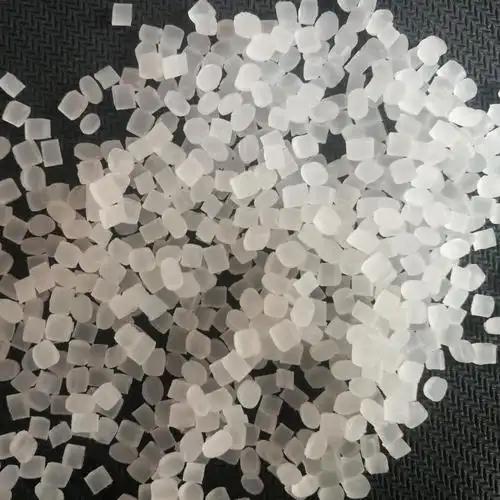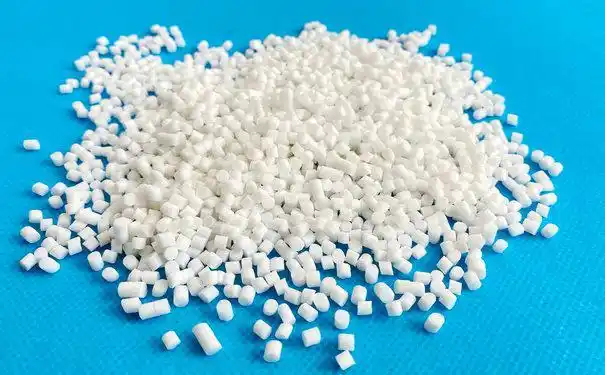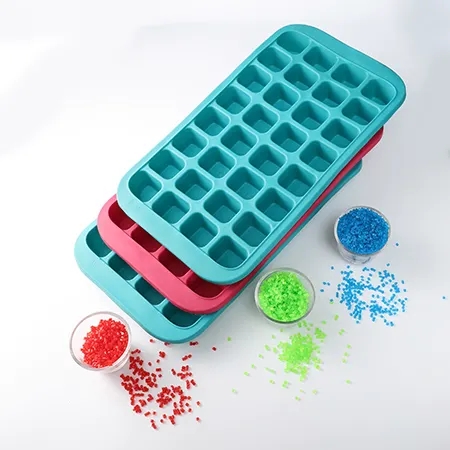When it comes to choosing materials for baby products, every parent wants the best—something safe, durable, and gentle for their little one. I’ve been in the material science and baby product industry for years, and I’ve seen firsthand how overwhelming it can be to navigate the sea of options out there. The question of whether polypropylene (PP) or thermoplastic elastomer (TPE) is better for baby products like bottles, teethers, or pacifiers pops up a lot. It’s not just about picking a material; it’s about ensuring your baby’s safety and comfort while balancing practical concerns like cost and ease of use. So, let’s dive into this topic with a clear lens, exploring what these materials bring to the table and which might suit your needs best.

Understanding the User’s Concerns
Parents searching for information on PP versus TPE for baby products are likely wrestling with a few key worries. They want to know: Is the material safe for my baby to chew on or drink from? Will it last through countless feedings and sterilizations? Is it eco-friendly or budget-friendly? Maybe they’ve heard buzzwords like “BPA-free” or “food-grade” and aren’t sure what they mean in practice. Some might be dealing with a fussy baby who rejects certain textures, or they’re frustrated by bottles that crack or toys that wear out too fast. My goal here is to break it all down, offering clarity so you can make a choice that feels right for your family.
What Are PP and TPE, Anyway?
Before we compare, let’s get to know our contenders. Polypropylene (PP) is a hard, rigid plastic often used for baby bottles, food containers, and some toys. It’s lightweight, tough, and known for being chemically stable, meaning it doesn’t react easily with other substances. Picture PP as the dependable workhorse of plastics—it’s not flashy, but it gets the job done.
Thermoplastic elastomer (TPE), on the other hand, is like the chameleon of materials. It’s soft and flexible like rubber but can be molded and recycled like plastic. TPE is often used for baby bottle nipples, teethers, and soft toys because it mimics the gentle feel of silicone while being easier to process. I’ve always found TPE’s versatility fascinating—it’s like the material equivalent of a cozy blanket, adaptable and comforting.
Both materials are popular in baby products, but they shine in different ways. Let’s explore their properties to see how they stack up.

Safety: The Top Priority for Parents
When it comes to anything your baby touches (or, let’s be real, puts in their mouth), safety is non-negotiable. Both PP and TPE can be made BPA-free and meet food-grade standards, but there are nuances.
PP Safety: PP is widely regarded as safe for baby products. It’s non-toxic, odorless, and doesn’t leach harmful chemicals when properly manufactured. Most PP baby bottles are certified to meet standards like FDA, EU, or LFGB, which means they’ve been tested to ensure they won’t release nasties into your baby’s milk or food. I remember chatting with a supplier years ago who swore by PP for its reliability in high-volume production—hospitals use it for a reason.
TPE Safety: TPE also gets a gold star for safety when formulated correctly. Many TPE grades are non-toxic and comply with food-grade certifications like ROHS, PAHS, and REACH. However, not all TPEs are created equal. Some lower-quality versions might contain additives that aren’t ideal for prolonged contact with food or saliva. Always check for certifications when choosing—TPE’s flexibility makes it a favorite for soft, squishy teethers, but you want to be sure it’s top-notch.
One thing to note: while both materials can be safe, silicone (often confused with TPE) is sometimes preferred for its superior biocompatibility, especially in medical-grade applications. TPE is catching up, though, with newer formulations designed to match silicone’s safety profile.
Durability: Will It Survive the Baby Tornado?
Babies are tiny forces of nature—droppers, chewers, and throwers extraordinaire. A good baby product needs to withstand their chaos.
PP Durability: PP is a champ in this department. It resists cracking and breaking, even when your toddler decides to hurl their bottle across the room. Its rigid nature makes it ideal for structured items like bottles or feeding bowls. I’ve seen PP bottles last through multiple kids, still looking nearly new after countless dishwasher cycles. However, PP can scratch over time, which might make it look worn.
TPE Durability: TPE’s softer, rubbery texture is a double-edged sword. It’s fantastic for flexibility—think bendy bottle nipples or squishy teethers that soothe sore gums. But it’s less resistant to abrasion and tearing compared to PP. If your baby is a vigorous chewer, TPE might show wear faster. That said, high-quality TPE can still hold up well, especially for items not subjected to intense stress.

Here’s a quick comparison of their durability:
|
Feature |
PP |
TPE |
|---|---|---|
|
Break Resistance |
High—resists cracking |
Moderate—can tear if stretched |
|
Abrasion Resistance |
Good—scratches but holds shape |
Moderate—prone to wear |
|
Lifespan |
Long-lasting, multiple uses |
Good, but depends on quality |
Comfort and Feel: What’s Best for Your Baby?
Let’s talk about the sensory side of things—after all, babies explore the world through touch and taste. The feel of a material can make or break their love for a bottle or teether.
PP Feel: PP is hard and smooth, which works great for rigid bottles or containers. It’s not cuddly, but it’s practical. Some babies don’t mind the firmness, especially for bottles where the nipple (often TPE or silicone) does the comforting. I recall a friend’s baby who adored her PP bottle because it was easy to grip, but she rejected softer bottles that felt “too floppy.”
TPE Feel: TPE is the winner for softness. Its rubbery, flexible texture feels soothing, especially for teethers or nipples designed to mimic a mother’s breast. TPE’s ability to be molded into different hardness levels (from gel-like to firm) means you can find a texture that suits your baby’s preferences. It’s like giving them a gentle hug in material form.
Temperature Resistance: Can It Handle the Heat?
Babies don’t care about your sterilization routine—they just want their milk or toy now. But as a parent, you need materials that can handle boiling water, steam, or dishwashers without breaking a sweat.
PP Temperature Resistance: PP is solid for most baby product needs. It can withstand temperatures up to about 120°C (248°F), making it safe for boiling or steam sterilization. However, prolonged exposure to high heat can cause PP to warp slightly over time. I’ve seen PP bottles hold up fine in dishwashers, but I always recommend checking manufacturer guidelines to avoid surprises.
TPE Temperature Resistance: TPE’s heat resistance varies by grade but typically maxes out around 100-120°C (212-248°F). It’s fine for most sterilization methods, but it’s not as robust as silicone, which can handle up to 230°C (446°F). If you’re a stickler for frequent high-heat sterilization, TPE might soften or deform slightly over time. That said, for everyday use, it’s usually more than adequate.
Here’s how they compare:
|
Feature |
PP |
TPE |
|---|---|---|
|
Max Temp |
~120°C (248°F) |
~100-120°C (212-248°F) |
|
Sterilization |
Boiling, steam, dishwasher safe |
Boiling, steam (check grade) |
|
Heat Deformation |
Low risk, may warp over time |
Moderate risk, depends on use |
Environmental Impact: Thinking About the Planet
As a parent, you’re not just thinking about your baby—you’re thinking about the world they’ll grow up in. Both PP and TPE have eco-friendly credentials, but there are differences.
PP Environmental Impact: PP is recyclable, which is a big plus. It’s one of the most commonly recycled plastics, and its lightweight nature reduces shipping emissions. However, PP is derived from petroleum, which isn’t the greenest starting point. If not recycled properly, it can linger in landfills for centuries. I’ve worked with manufacturers who prioritize recycled PP, and it’s heartening to see brands making an effort to close the loop.
TPE Environmental Impact: TPE is also recyclable, and its ability to be re-melted and re-molded makes it a darling of sustainable design. Some TPE grades are even biodegradable within a few years, which is a game-changer. However, like PP, TPE is often petroleum-based, so its eco-friendliness depends on the specific formulation and recycling infrastructure in your area.

Cost: Balancing Quality and Budget
Let’s be honest—parenting is expensive. You want the best for your baby, but you also need to keep an eye on your wallet.
PP Cost: PP is generally the more budget-friendly option. Its widespread use in manufacturing means economies of scale keep costs down. A PP baby bottle might cost $5-15, making it a go-to for parents stocking up. I remember buying a set of PP bottles for my niece and being amazed at how affordable they were compared to other materials.
TPE Cost: TPE tends to be pricier due to its specialized properties and processing needs. High-quality TPE for baby products can push costs up, especially for items like premium teethers or nipples. Expect to pay $10-20 for a TPE-based product, though the softness and safety often justify the price.
Here’s a cost comparison:
|
Feature |
PP |
TPE |
|---|---|---|
|
Material Cost |
Low to moderate |
Moderate to high |
|
Product Price |
$5-15 per item |
$10-20 per item |
|
Production Cost |
Lower, simpler processing |
Higher, specialized molding |
Processing and Manufacturing: Behind the Scenes
For those curious about how these materials become baby products, let’s peek behind the curtain. PP is a dream for manufacturers because it’s easy to mold using standard injection machines. Its rigidity allows for precise shapes, which is why PP bottles often have sleek, consistent designs. However, it’s less forgiving if you need to tweak a prototype—once molded, PP is set.
TPE, with its rubbery charm, is a bit trickier to process. It requires specialized equipment for injection molding or extrusion, but its recyclability means manufacturers can re-melt scraps, reducing waste. TPE’s ability to bond with other plastics (like PP!) makes it a favorite for overmolding, where a soft layer is added over a hard base, like on a bottle nipple. I once visited a factory where TPE was being molded into teethers, and the process was mesmerizing—liquid-like material transforming into soft, squishy toys.
Real-World Applications: Where They Shine
So, where do PP and TPE fit in the world of baby products? Here’s a rundown:
PP Applications: Think rigid baby bottles, feeding bowls, sippy cups, and toy components. Its durability and affordability make it a staple for items that need structure. For example, a PP bottle with a TPE or silicone nipple is a classic combo—hard bottle, soft nipple.
TPE Applications: TPE is the go-to for anything soft and flexible, like bottle nipples, teethers, pacifiers, and soft grip toys. Its ability to mimic a natural, breast-like feel makes it a favorite for newborns transitioning from breastfeeding. I’ve seen TPE teethers become a lifesaver for parents during teething phases—babies love the chewable texture.
My Take: Which Should You Choose?
Choosing between PP and TPE isn’t about declaring a winner—it’s about matching the material to your needs. If you’re after durability and affordability, PP is hard to beat. It’s perfect for bottles and containers that need to withstand rough handling and frequent cleaning. But if comfort and flexibility are your priority—say, for a teether or nipple that soothes your baby—TPE’s softness is a game-changer.
I lean toward TPE for items that go in a baby’s mouth because that soft, pliable feel is so comforting. But I’ve also seen PP bottles become a family’s go-to for years, especially when budget is a concern. It’s like choosing between a sturdy backpack and a cozy sweater—both are great, but they serve different purposes.
A Personal Story
Let me share a quick story. When my cousin was preparing for her first baby, she was overwhelmed by the sheer number of bottle options. She tried a fancy silicone bottle, but it was pricey and retained some formula odors. Then she switched to a PP bottle with a TPE nipple, and it was a game-changer—affordable, easy to clean, and her baby loved the soft nipple. It wasn’t perfect (the PP scratched a bit), but it worked for her busy lifestyle. That experience taught me that no material is “perfect”—it’s about what fits your life.
Making Your Decision
Here’s a simple guide to help you choose:
Choose PP if: You need a budget-friendly, durable bottle or container. You’re okay with a rigid material and want something that’s easy to find and replace.
Choose TPE if: You want a soft, flexible product like a teether or nipple. You prioritize comfort and are willing to pay a bit more for quality.
Consider both: Many products combine PP and TPE, like a PP bottle like a PP bottle with a TPE nipple, giving you the best of both worlds.
Always check for certifications (FDA, EU, LFGB) to ensure safety, and consider your baby’s preferences—some love soft textures, others don’t care. Also, think about your lifestyle—are you constantly on the go, needing lightweight options, or do you prioritize eco-friendliness?

Frequently Asked Questions
Q: Are PP and TPE both safe for baby products?
A: Yes, both can be safe when certified as BPA-free and food-grade. PP is widely used in bottles and containers, while TPE is great for soft items like nipples and teethers. Always check for certifications like FDA or REACH to be sure.
Q: Can PP and TPE be recycled?
A: Absolutely! PP is one of the most recyclable plastics, and TPE can be re-melted and reused, making both eco-friendly choices. Check local recycling programs to ensure proper disposal.
Q: Which is better for teething toys—PP or TPE?
A: TPE is usually better for teething toys because its soft, flexible texture is gentler on sore gums. PP is too rigid for chewing but works well for toy bases or handles.
Q: Do PP and TPE retain odors or stains?
A: PP is less likely to retain odors but can scratch, showing wear. TPE can pick up odors or stains from formula or juice, so it needs thorough cleaning. Silicone might be a better bet if odor retention is a big concern.
Q: How do I know if a product is high-quality PP or TPE?
A: Look for reputable brands and check for safety certifications (FDA, EU, LFGB, ROHS). High-quality products will list these on packaging or their website. If in doubt, contact the manufacturer for details.
By understanding the strengths and quirks of PP and TPE, you can choose a material that keeps your baby safe, happy, and comfortable—because that’s what parenting is all about, right?





